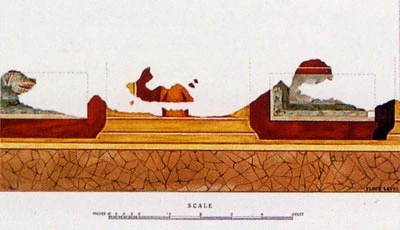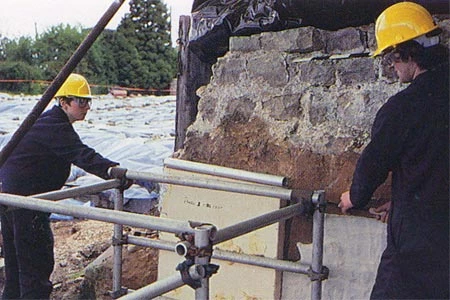Fine fresco wall painting removed for conservation
Watercolour by F.G. Newton, 1905
Removing one of the panels
In 1988, archaeological excavations of the council chamber in the basilica (assembly hall) of the Roman town at Caerwent revealed a fine wall painting that has since been removed for conservation and display.
The painted plaster or fresco, 5m long and 1m high, was still attached to the south wall of the chamber. It had been previously recorded in watercolour by F. G. Newton in 1905, and had been covered over again.
The fresco shows an architectural perspective, with yellow pillars above a brown veined pink dado. A dark brown area in the central pillar may be part of a decorated panel, possibly containing the torso of a man.
It was decided to remove the fresco to prevent further deterioration as the plaster was extremely fragile.
After carefully covering the delicate artwork with muslin and glue, the painting was cut into five panels. Each enclosed in specially-designed boxes.
A variety of saws and chisels were used to separate the painted plaster from the wall. Since access to the back of each panel was restricted to its top edge and one side, this process was difficult, needing extreme patience and ingenuity.
It took a total of nine days to remove the painting, with the subsequent conservation and rebacking taking several years, the fresco is now conserved and stored at the National Museum, Cardiff.
Background Reading:
Caerwent Roman Town by R.J. Brewer. Published by Cadw (2006).

